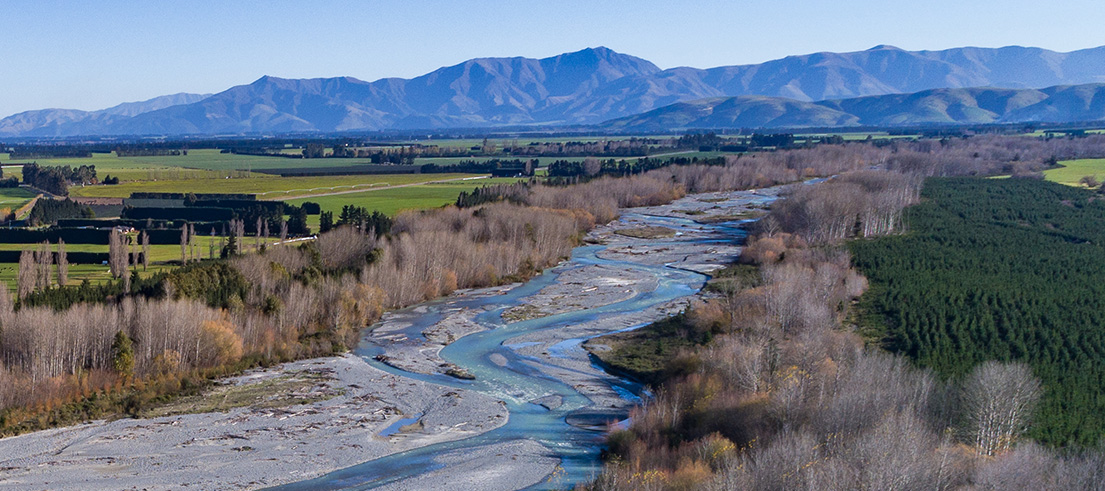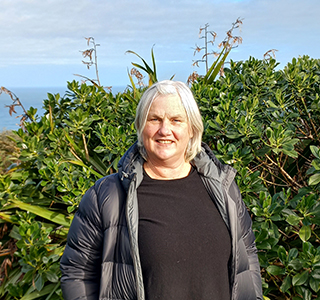
New role empowers communities in the Ashburton zone
A dedicated coordinator to champion local environmental projects has been supported by the Ashburton Water Zone Committee.
The Mid-Canterbury Catchment Collective (MCCC) has appointed Angela Cushnie as a coordinator thanks to $30,000 of funding allocated as part of the zone committee’s action plan.

Angela Cushnie's new role as coordinator ensures the community is connected to enable positive environmental change
MCCC’s goals strongly align with many of the Ashburton Zone Committee action plan goals, including a focus on several waterbodies in the area; enhancing biodiversity & mahinga kai; improving ecosystem health; enhancing recreation and amenities; advocating for the protection of native fish species, including uninterrupted access to the sea and the reduction of fish barriers where appropriate.
Angela, who grew up in the Hinds area, said water quality has become a concern for mid-Canterbury residents over the course of her lifetime and she is passionate about the community’s role to enable environmental change.
“MCCC sees these challenges as an opportunity, and my new role is all about supporting communities to create positive environmental changes in a way that is sustainable and inter-generational. I can draw on my communications and facilitation background to join the dots and bring science, ideas, and action together.
“Often it is just a matter of connecting diverse groups of people who are looking for the same outcomes so we can avoid duplication and make the most effective use of our resources, time, and energy.”
Connecting and championing communities
Angela said the pace and volume of change is rapidly increasing with new environmental regulations being launched simultaneously, which often places huge pressures on landowners and the wider community.
“One of our main objectives is to acknowledge and celebrate the good work that is already happening inside farm gates, while continuing to improve our environmental footprint, support catchment group initiatives, and champion community wellbeing.
“Identifying the key areas to focus on is really vital and this is where I believe my new role will add value, connect communities, and apply a strategic lens to address projects at a catchment level, then step that out to a regional level.”
Improving relationships for the environment
Ashburton Zone Committee chair Bill Thomas said he believes Angela’s new role will provide a more direct connection with the community, iwi, and landowners.
“There has been a bit of disconnection, and I think we should always be working on improving relationships with the broader community and working on projects that are practical with a community focus.
“Having Angela, with her outstanding organisational skills and connections with many different sectors of the community, will provide a more cohesive and coordinated approach to environmental projects.
“If we can bring people together at a catchment level to hone in and focus on the significant issues then we can do more. If everyone works together, we can achieve positive environmental outcomes, especially in a diverse area like mid-Canterbury which covers land and people from the mountains to the sea and everything in between.”
Funding for local projects
Each of Canterbury’s water zone committees has an action plan which outlines how they will work with the community to deliver their aspirations for freshwater, as outlined in the Canterbury Water Management Strategy (CWMS). Committees, including Ashburton Water Zone Committee, were provided $50,000 to support projects in their zones.
Angela is also a member of the Ashburton Zone Committee and a community member of the Regional Committee, but did not take part in the decision-making process for this funding allocation.
Ashburton Water Zone Committee has supported the following projects as part of its action plan:
- Mid-Canterbury Catchment Collective: Coordination, strategy, marketing and administration – $30,000
- Mid-Canterbury Catchment Collective: Coordinate a resource of catchment information – $6,000
- Ashburton District Council: Whakanui/Wakanui hāpua pine tree removal – $4,000
- MHV Water: Nitrate sensor for constructed wetland trial – $10,000
Funding will be used to scope the project, suitable for a Masters student, who will help collate the information. The funding will also go towards professional advice as a method of information capture and retrieval that is most suited for the Mid Canterbury Catchment Collective Science Update.
Whakanui Beach and hāpua has significant scientific value and provides a unique example of rare coastal vegetation and biodiversity including 26 species of native plants, some classified as ‘threatened - at risk’, 52 insect species and many bird species.
Whakanui is also an historic and important mahinga kai site for mana whenua and is a highly significant archaeological site with many Māori artefacts, including moa bones and pounamu tools.
The Hekeao Wetland project is a community project with involvement from rūnanga and industry groups. The lessons learned from the project will assist farmers in the zone to construct effective wetlands to improve water quality. The design is based on the Kaiwaiwai constructed wetland in Wairarapa.
Nitrogen sensors are essential to provide real time monitoring, and for results to be available to the public. This is critical to monitor success and to inform decisions by farmers on the style of wetland they will build.
The Ashburton Water Zone Committee is a joint committee made up of community members, rūnanga and local councils. Find out more on our water zone page.
